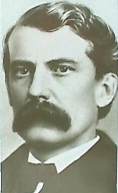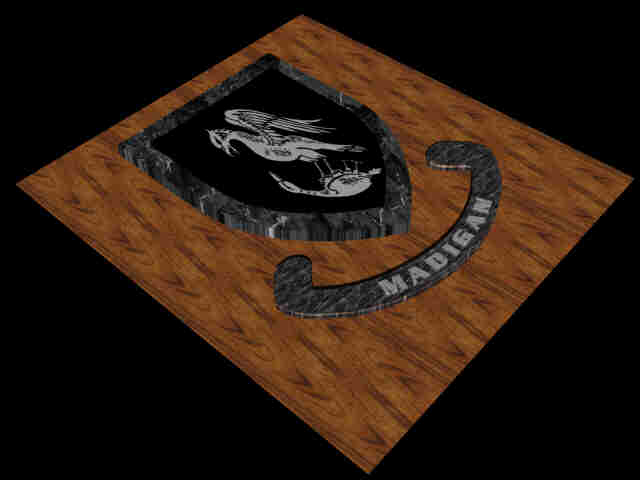The Henry
Flagler Mansion
Flagler
Museum
Palm Beach,
FL.
December 5th, 1999
As
we travel through America, we often find ourselves visiting the
great mansions which are sometimes called America's Castles. Most
of these were erected during what is coined as "America's
Gilded Age". This period existed between the end of the
Civil War in 1865 and the crash of the stock market in 1929.
During this time most of the things we take for granted today
were invented, or discovered by the movers and shakers of that
period. Automobiles, airplanes, phonographs, and telephones. It
was the age of the railroads. Many of the great names in
business, Vanderbilt, Rockefeller,
the
great mansions which are sometimes called America's Castles. Most
of these were erected during what is coined as "America's
Gilded Age". This period existed between the end of the
Civil War in 1865 and the crash of the stock market in 1929.
During this time most of the things we take for granted today
were invented, or discovered by the movers and shakers of that
period. Automobiles, airplanes, phonographs, and telephones. It
was the age of the railroads. Many of the great names in
business, Vanderbilt, Rockefeller,  and Morgan saw their personal wealth and position
mushroom to unbelievable proportions during this period. One name
that can be added to the great of the greats, is Henry Flagler.
Born in New York, as the son of a Presbyterian minister, Flagler
would build his empire in record time. As the legal mind behind
Standard Oil, which he and John D. Rockefeller created, Flagler
found himself in a position to start a new adventure; the
development of Florida as a tourist attraction where wealthy
northern visitors could escape the rigors of the cold damp
winters. By building railroads and hotels along the Atlantic
coast from St. Augustine to Key West, Flagler opened up the State
to a new, magnificent era of prosperity. His
and Morgan saw their personal wealth and position
mushroom to unbelievable proportions during this period. One name
that can be added to the great of the greats, is Henry Flagler.
Born in New York, as the son of a Presbyterian minister, Flagler
would build his empire in record time. As the legal mind behind
Standard Oil, which he and John D. Rockefeller created, Flagler
found himself in a position to start a new adventure; the
development of Florida as a tourist attraction where wealthy
northern visitors could escape the rigors of the cold damp
winters. By building railroads and hotels along the Atlantic
coast from St. Augustine to Key West, Flagler opened up the State
to a new, magnificent era of prosperity. His  architectural style can
be seen in most of the Atlantic coastal cities where his
influence was evident in the development of hotels and other
buildings. So it stood to reason that when it was time to present
his new wife with a mansion as a wedding gift, the mansion would
have to be the grandest and most lavish of masterpieces
conceivable. Called "Whitehall", the 55 room
extravaganza when built in 1912 stood out as the pinnacle of
graciousness afforded to only the very rich. As we passed through
the large bronze front doors,
architectural style can
be seen in most of the Atlantic coastal cities where his
influence was evident in the development of hotels and other
buildings. So it stood to reason that when it was time to present
his new wife with a mansion as a wedding gift, the mansion would
have to be the grandest and most lavish of masterpieces
conceivable. Called "Whitehall", the 55 room
extravaganza when built in 1912 stood out as the pinnacle of
graciousness afforded to only the very rich. As we passed through
the large bronze front doors,  we were greeted by a spectacle not found in any other
mansion in America. Marble Hall, as the main room is called, is a
44 hundred square foot reception hall designed to entertain. It
was stunning! We just stood in one place and tried to take it all
in but there was way to much for that. At one end was displayed a
giant Christmas Tree, which was scheduled to be lit by a
descendant of Flagler on the very day we had chosen to visit. At
the other end was a deep green marble table designed especially
for this room. Atop this table is a bust of Caesar Augustus. The
ceiling depicts the "Crowning of Knowledge" . In an
alcove next to the table there was an interesting collection of
art acquired by the family.
we were greeted by a spectacle not found in any other
mansion in America. Marble Hall, as the main room is called, is a
44 hundred square foot reception hall designed to entertain. It
was stunning! We just stood in one place and tried to take it all
in but there was way to much for that. At one end was displayed a
giant Christmas Tree, which was scheduled to be lit by a
descendant of Flagler on the very day we had chosen to visit. At
the other end was a deep green marble table designed especially
for this room. Atop this table is a bust of Caesar Augustus. The
ceiling depicts the "Crowning of Knowledge" . In an
alcove next to the table there was an interesting collection of
art acquired by the family.  As is the case in many personal collections, there
seemed to be no rhyme or reason to the assortment of vases,
carvings and sculptures. Each exquisite unto itself yet unrelated
to its surroundings. One particular bench caught my eye.
Constructed of marble, the ends were sculptures of a winged
creature, half woman and half lion. It sat along a wall and was
serviceable. This theme of unrelated art was continued throughout
the mansion, always with the best of taste and balance, something
new around every corner. It reflected the interest and desire of
the Titans of the Gilded Age to gather around them the beauty and
elegant refinements
As is the case in many personal collections, there
seemed to be no rhyme or reason to the assortment of vases,
carvings and sculptures. Each exquisite unto itself yet unrelated
to its surroundings. One particular bench caught my eye.
Constructed of marble, the ends were sculptures of a winged
creature, half woman and half lion. It sat along a wall and was
serviceable. This theme of unrelated art was continued throughout
the mansion, always with the best of taste and balance, something
new around every corner. It reflected the interest and desire of
the Titans of the Gilded Age to gather around them the beauty and
elegant refinements previously only possessed by the nobility of Europe.
From the Grand Hall, we could go in various directions. The
staircase was across from the entrance, however we chose to turn
south and enter the music room. Here again Flagler had spared no
expense in creating a magnificent decor filled with the most
opulent furnishings. Music was important in the Gilded Age. It
was an entertainment fundamental to the life style of the newly
created moguls of industry and trade. In this room Mrs. Flagler
hosted bridge parties, took afternoon tea, and held meetings of
the Fortnightly Club, a group of women who gathered for programs
of lectures
previously only possessed by the nobility of Europe.
From the Grand Hall, we could go in various directions. The
staircase was across from the entrance, however we chose to turn
south and enter the music room. Here again Flagler had spared no
expense in creating a magnificent decor filled with the most
opulent furnishings. Music was important in the Gilded Age. It
was an entertainment fundamental to the life style of the newly
created moguls of industry and trade. In this room Mrs. Flagler
hosted bridge parties, took afternoon tea, and held meetings of
the Fortnightly Club, a group of women who gathered for programs
of lectures
